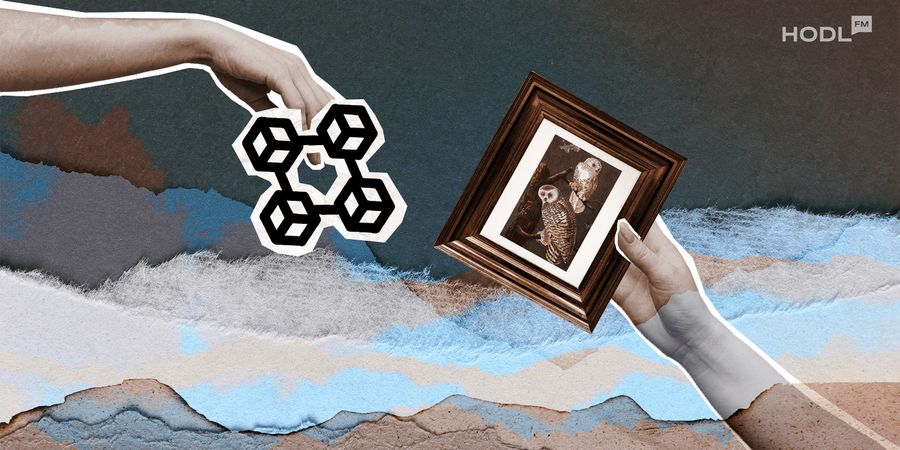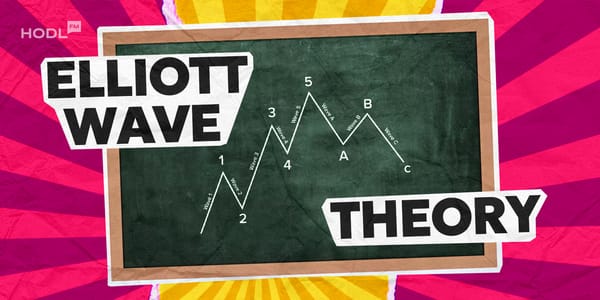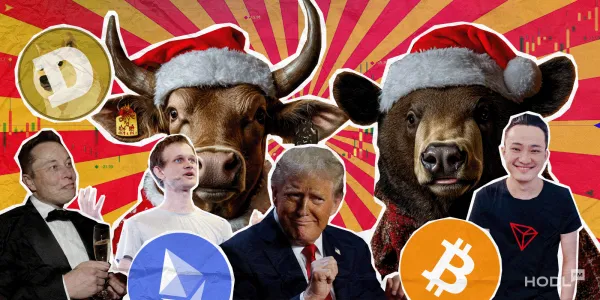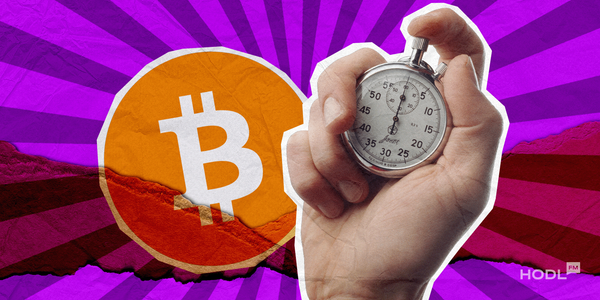When it comes to the art market, history has surely been playing tricks on us. It’s like this sector is only meant for the all-fancy and well-to-do folks. While the commoners are left drooling over the beauty of these artistic masterpieces from afar. Can you believe it?
But hold on—you’re about to see some amazing statistics! With a staggering price tag of $68 billion, the international art market is showing its muscles. Billions, that’s that is the worth of the 2023 art market. It appears as though a gold vault has been used to conceal all the artistic treasures.
Traditional art is undoubtedly lovely, like a smooth-talking investment date with captivating paintings and colours that will send you on an emotional roller coaster. But hey! let’s be real here. Dealing with traditional art can be a bit of a hassle. Forget attempting to fit those huge pieces of art into your small apartment; you need a lot of energy and tools. It’s like giving your entire neighborhood a workout by moving them around!

Selling traditional art is like walking a tightrope with a blindfold on. The market is smaller, and the prices are sky-high, making it tough to find buyers Also, let’s not forget the time and effort it takes to create traditional art.
Read More:
- Art Evolution, DeFi Aggression, Ripple’s Transparency Clash, and Crypto Losses
- How to Buy NFTs Without Owning Crypto
- Artful Adventures in the Metaverse: The British Museum and The Sandbox Team Up
In our current era of instantaneous fulfilment, we demand immediate satisfaction for all of our needs. But there are still traditional artists out there, hustling hard, sometimes their works become as uncommon as seeing a unicorn.
But there’s still hope! art tokenization is saving the day. The Robin Hood of the art sector is giving power back to the people!
With the introduction of blockchain technology to art, everyone can be art investors and the best part? You don’t need to be swimming in a pool of money to own a piece of the artistic pie. The rich and famous can’t keep this adventure all to themselves anymore; we’re all in on it now! Cheers to democratizing the art market, one digital token at a time!
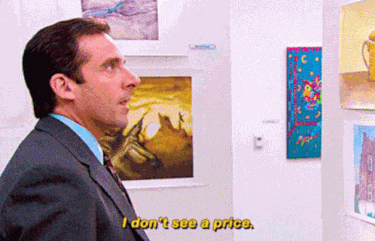
Understanding Art Tokenization
Art tokenization is the process of transforming artwork into digital tokens making it freely accessible to anyone! It’s like erasing the boundaries and difficulties of having access to exclusive art ownership and inviting everyone to join the party.
Years ago, art sales happened in fancy galleries and big auctions. The ownership of art has undergone a profound transformation due to recent technological advancements, facilitating seamless digital transactions with a mere tap on a phone screen, making it possible to conduct smooth digital transactions with just a phone screen tap. Like the social act of splitting a large pizza with friends, this digital concept enables people to enjoy artistic works together, promoting an affordable and inclusive method of ownership.
Read more: When Gaming Meets Blockchain: The Eccentric, Enigmatic, and Exciting World of GameFi
This cool digital magic turns real art into special tokens on a secure platform. It’s like having a virtual art gallery in your hand! No more exclusivity – the art world is open to all, making art ownership and appreciation an exciting experience for everyone.
Art tokenization is a tech marvel that creates unique digital representations of artworks on a blockchain, like a special certificate of authenticity.
How Does It Work?
Art tokenization works like a digital transformation. It’s all about turning real-world artworks, like paintings or photographs, into special digital tokens that live on a secure and transparent platform called a blockchain. This process makes it easier for people to invest in and trade art. It’s like giving each artwork its own special superpower!

Features of Tokenizing Art
Ownership: Blockchain allows for unique and verifiable ownership records, to ensure transparency and security through its decentralized nature.
Authentication: Tokenized arts enables a secure and transparent way to verify its authenticity and ownership history.
Liquidity: It allows for seamless peer-to-peer transactions without the need for any intermediary, there by , reducing transaction costs and increasing liquidity.
In today’s technological environment, the tokenization of art is a huge trend. It’s like giving art a magical makeover. With blockchain’s transparent and unchangeable wizardry, it transforms artwork into enchanting tradeable tokens, promoting openness in the art industry.
Also, art tokenization allows individuals and organizations to own fractional shares of valuable artworks. This makes art ownership more accessible and inexpensive because investors can buy and hold a portion of an artwork rather than having to buy the full piece.
Advantages of Art Tokenization
- Increased liquidity for artists and collectors:Tokenization enhances liquidity in the art market. Traditionally, selling valuable artworks could take a long time and involve high transaction costs. With art tokenization, digital tokens representing ownership can be quickly and easily traded, enabling investors to access the value of their assets more readily. Goodbye to those agonising months or years waiting for the right buyer.
- Democratizing art investment and ownership: Many are with dream of owning a Picasso or a Monet! No more feeling left out while the rich and famous flaunt their exclusive art collections. Tokenization breaks down the barriers that once separated you from those priceless masterpieces.
- Breaking down barriers in the art market: Art is breaking barriers, and art tokenization is playing a significant role in this revolution. There is no denying that the global art market is booming—in 2018, its estimated worth was a whopping $63.7 billion. Now, with the presence of market trends and the introduction of tokenization, the art world is evolving into an inclusive and accessible realm.
Gone are the days when the art market was an exclusive club limited to a privileged few. The process of art tokenization is dismantling these barriers and enabling everyone to take a front-row seat in this fascinating world of art.

Challenges and Concerns
- Ownership and Provenance:Tokenization raises concerns regarding the artwork’s validity and authenticity. It is important to ensure that the token represents the true ownership and history of the physical artwork.
- Regulatory Compliance: Art tokenization involves complex legal and regulatory considerations.
- Security and Hacking Risks:Storing art data and transactions on a blockchain exposes it to potential cyber-attacks. Strong security measures are needed for preventing hacks and theft.
- Inclusivity and Accessibility: While tokenization has the potential to democratize art investment, it may also create barriers for non-tech-conscious or less affluent art enthusiasts who may be excluded from the digital market.
Real-World Examples
One notable example of a valuable NFT artwork is “Everydays”, created by digital artist Beeple. This digital collage comprises 5000 images from his Everydays series.
The associated NFT was sold at Christie’s auction house in 2021 for $69.3 millions setting a record as the most expensive non-fungible token ever purchased.
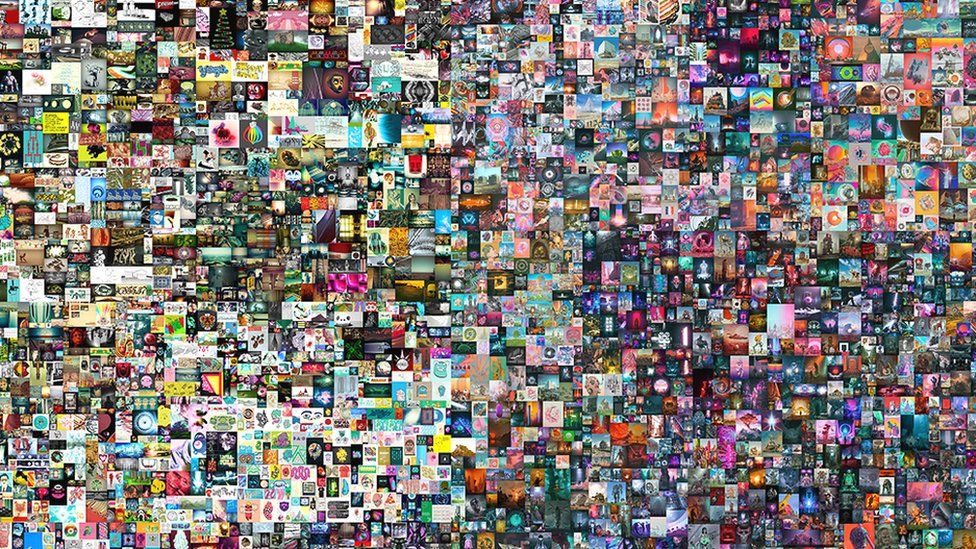
Another example is the tokenized artwork by Andy Warhol’s “14 Small Electric Chairs (1980).” This multi-million-dollar masterpiece, initially valued at $1.7 million, caused a frenzy in the art world when it was sold using blockchain technology.
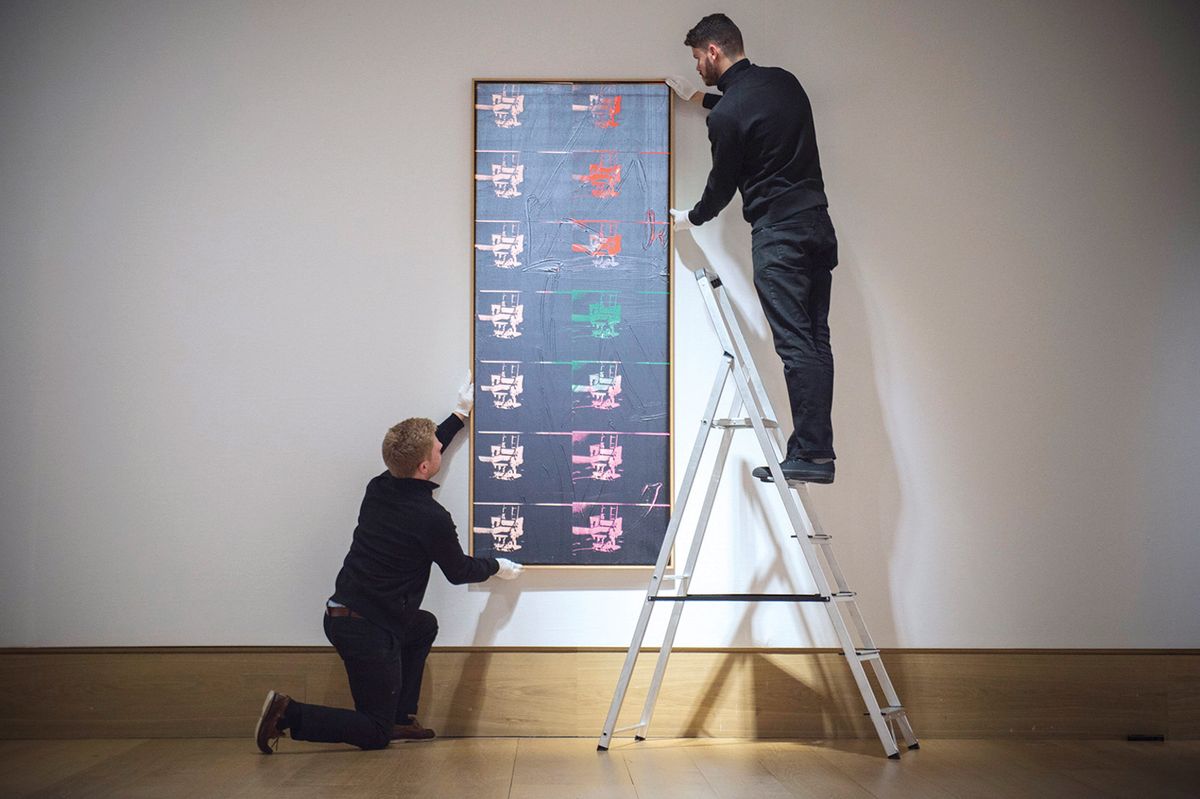
The news spread like wildfire, attracting hundreds of eager investors. The attention generated by this unconventional sale actually pumped up the artwork’s value to a jaw- dropping $5.6 million! Who knew that a bunch of electric chairs on a canvas could create such a shocking success on the blockchain?
The Future of Tokenized Art
The future prospects of tokenized arts are incredibly promising as the art market keeps booming. With blockchain technology, physical assets like real estate and artwork are transformed into digital tokens, offering improved traceability and liquidity.
This art revolution is now reaching a broader audience, making art ownership and investment more accessible and inclusive. The art market is predicted to go from $2.3 billion in 2021 to $5.6 billion by 2025, with an average yearly growth rate of 19%.This means there is a chance that an increasingly larger population will gain access to art ownership, effectively democratizing an industry that was once exclusive to some set of individuals.
Final Thoughts
Well, well, it looks like the art industry finally got a taste of the blockchain revolution, and it’s here to party! Say goodbye to those old-school, stuffy art barriers, because art tokenization is breaking them down like a boss.
The new transformation to the art being transformed into the digital tokens sector is like having a new sophisticated sheriff in an uncivilised town! With the introduction of blockchain and NFTs, we’ve got ourselves a wild ride of inclusivity and democratization in the art world.

Art tokenization is like the art market’s cool, edgy cousin, tearing down those walls and giving everyone a piece of the artistic pie. No more standing on tiptoes, peering into the exclusive art club. Now, it’s an all-access, no-holds-barred kind of deal.
And let’s be real, who doesn’t want a piece of art action? With art tokenization, you can own a digital slice of those fancy-schmancy masterpieces without emptying your bank account to afford it. It’s like the art market’s version of a Black Friday sale! From the comfort of your couch wearing sweats, grab your digital tokens and learn to appreciate art. It’s time to infuse the art world with some energy and make Warhol proud!
Disclaimer: All materials on this site are for informational purposes only. None of the material should be interpreted as investment advice. Please note that despite the nature of much of the material created and hosted on this website, HODL FM is not a financial reference resource and the opinions of authors and other contributors are their own and should not be taken as financial advice. If you require advice of this sort, HODL FM strongly recommends contacting a qualified industry professional.
